Pegasus Bridge – The Beginning of D-Day and the Allied Invasion
In the previous post I described why I had chosen Liberation Tours for a tour of Canadian WWI and WWII sites in France, Belgium and Holland. We broke camp early on day two of the Liberation Tour 2015 and departed Paris on an overcast morning heading for Normandy and the coast where we would spend three days touring D-Day sites starting at Pegasus Bridge. The traffic was light and it wasn’t long before we were in the gorgeous springtime countryside of northern France with mustard fields, apple orchards and bulbs in full bloom. France has always been famous for its unremitting protection of its farmers, which might be a questionable economic policy, but looking at these ancient farms with their sheep, cows, pigs, geese and chickens from which they derive so many delicious products, I am glad they do. There are also dozens of horse farms with magnificent specimens grazing on the new shoots.
I was pleasantly surprised to find that the bus had wifi, which while by no means a necessity, did help me research, in advance, the various sites we would be visiting and get a better understanding of what to expect. The wifi runs off cell tower signals and there seemed to be pretty good coverage.
We drove in a generally westerly direction from Paris passing exits for the major cities of Rouen and Le Havre on the way until we approached the Normandy coast near the city of Caen, crossing over the Orne River and then pulling into the Pegasus Memorial Museum where the story of Pegasus Bridge is told. On the way Phil did a great job of recreating the background to the history of the D-Day landings.
Pegasus Bridge
Most people think that D-Day began on June 6, 1944 when in reality it started in the very late hours of June 5 when paratroopers and glider troops landed in this area to secure the bridge over the Orne we had just crossed and the bridge over the Orne canal, then called the Benouville Bridge. These two bridges were vital to the Allies if they were to advance into Normandy from the beaches where they would be landing shortly. Here is a link to the story in detail.
The story of the combined operation is told in the museum where we met our local guide. This will become a fairly standard procedure on the Liberation Tour 2015. Phil gives us the military background to the places we visit, Mark takes care of non-military history and culture, John handles logistics and the local guides provide the on site detail.
The first stop at Pegasus Bridge was in front of a very detailed floor plan of Operation Deadstick as the taking of these bridges was termed. Usually the term military intelligence is an oxymoron, with nothing seeming ever to go by the plans drawn up by the higher ups who never actually put their boots on the ground until the fighting is over. Not so here – the precise coordination between the paratroopers, commandos and the glider troops, in the dark, in any area pockmarked with shell craters and covered with marshes, was almost a miracle. Surprise appeared to be complete and both bridges were taken with two casualties. Lieutenant Den Brotheridge became the first man killed in combat on D-Day. Here is his plaque.
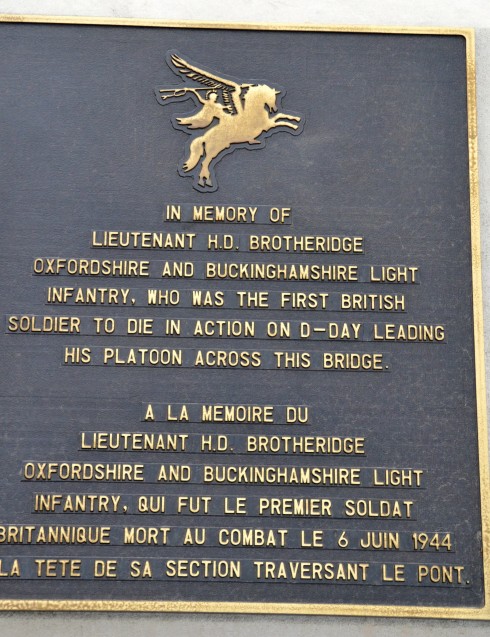
And here is his picture.
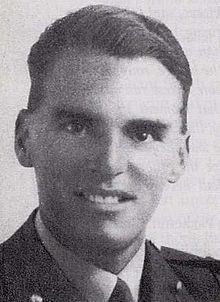
There is a very important Canadian artifact in the museum, Bill Millin’s bagpipes. Millin was born a Canadian in Saskatchewan, but raised in Scotland where he learned to play the bagpipes and became Lord Lovat’s personal piper. He is famous for piping Lovat’s commandos ashore in the early hours of June 6 invasion. Here is the scene of that event as depicted in the great movie TheLongestDay featuring a very young Sean Connery who would, only a few months later in 1962, introduce us to James Bond.
After the landing Millin is alleged to have piped Lovat and his troops across Pegasus Bridge, but according to our guide, Millin told him years later that he ran like hell across the bridge, although he did pipe on either side. What a great story. Here are those pipes.
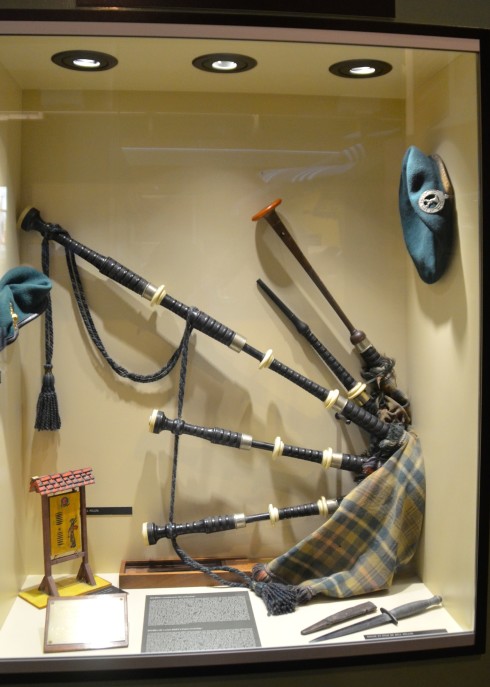
The original bridge was replaced with a bigger one in 1994 and the original is now on the grounds of the museum. It’s what is called a bascule bridge which can be elevated at one end to led ships pass underneath, as opposed to a drawbridge that splits into two halves when elevated.
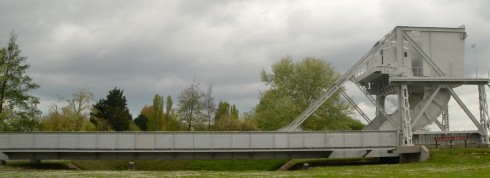
On the bridge our guide provided us with more detail about the operations that fateful night.
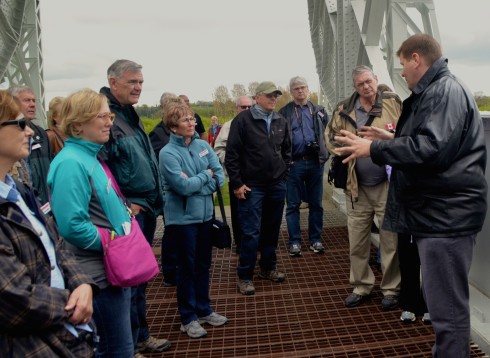
From the deck of the bridge I could see that the museum was designed with the profile of a glider.

Also on site is a full scale replica of one of the Horsa gliders used for the landings. I always thought of gliders as one or two man planes, but these gliders were huge and could hold up to twenty-eight troops inside.
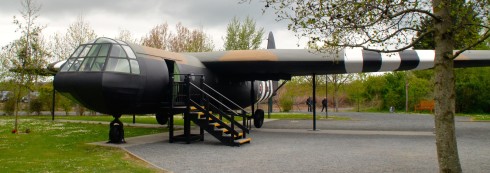
There was a Canadian element to these planes as they were constructed mostly from Canadian spruce.
After touring the museum and grounds we had a chance to walk to the current day bridge which just happened to be elevated to let two sailboats through.

After it was lowered we crossed over to the other side and had a look at the first house liberated on D-Day which has turned that fortuitous event into a money-making opportunity for the current owners. I suspect it won’t be the last such we come across.
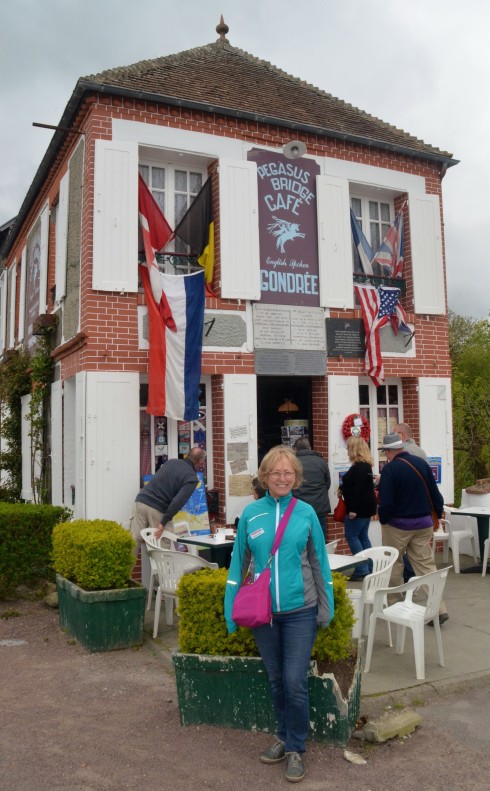
And now we’re off to lunch after which we will visit our first cemetery at Ranville, and find out how to find a specific grave.

